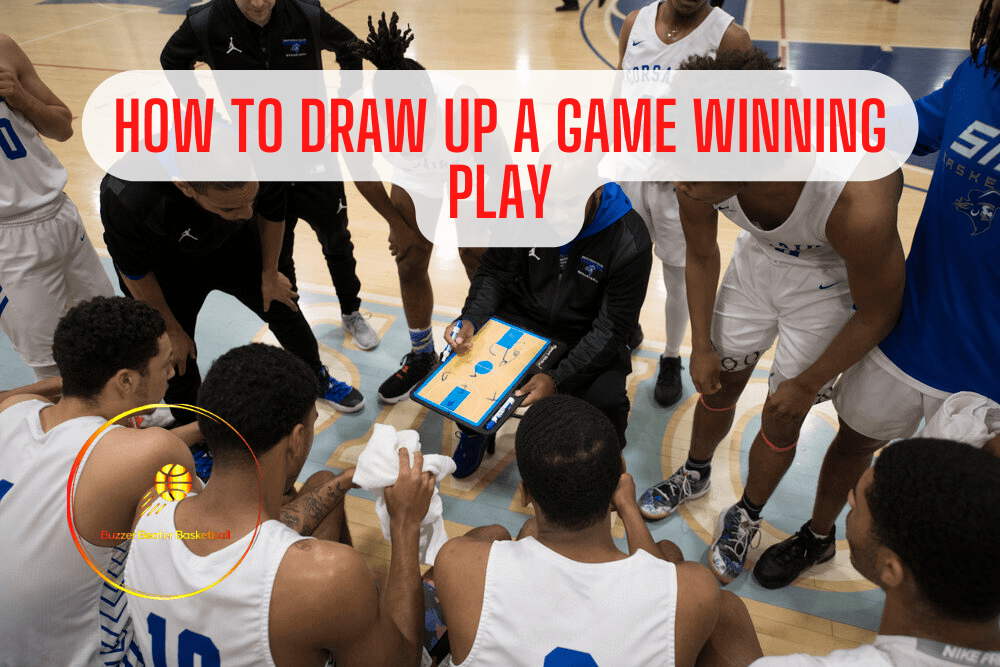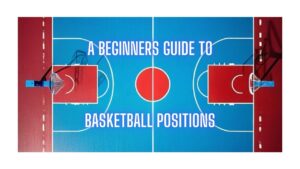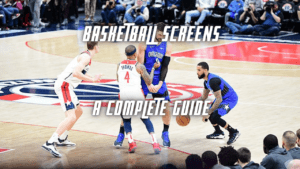How To Draw Up Game Winning Plays In Basketball

Take a moment to imagine this hypothetical situation. It’s the last 20 seconds of the game and the score is tied and your team has possession of the basketball so you call a timeout. The next 60 seconds determines your teams success and the outcome of the basketball game. You have to decide who gets the last shot and what kind of play are you going to draw up to get that last shot. These are the things a coach must think about in this situation and a good coach will make that decision almost instantly because a 60 second timeout is not very long, the worst thing a coach can do is freeze or take too much time making that decision wasting valuable seconds of the timeout.
Keep Your Composure
It is natural for a coach to feel slightly anxious and/or nervous in these situations, after all it shows that you care about what you are doing. However there is a big difference between feeling anxious/nervous and outwardly displaying it. You’re team looks to you in these situations and if you are visibly nervous then your players by extension will be nervous too which could effect their ability to perform. Your players will mimic your behaviours so act confident and decisive and your players will be instilled with confidence of their own. Talk to your team calmly and slowly and try to make eye contact with everyone as you explain the play. Your players are probably already feeling pressure of their own and they don’t need any additional pressure coming from you the coach in these situations.
Don’t Rely On The Officiating
Don’t expect the officials to call a foul. Most officials will not call a foul on the last possession of the game unless it is egregious, they don’t want the responsibility of potentially deciding the outcome of a game. With this in mind it may not be a good idea to draw a play for one of your players to go 1 on 1 for the last shot as they will probably be dealing with more physical defense than usual which could effect their ability to get a good shot. Even in the NBA the stats show that isolation plays are not as efficient as other plays and these are the best players in the world.
Have The Correct Players On The Floor
For most teams a play will be drawn up to get 1 or 2 players an opportunity to shoot the last shot, this means that the other 3 players will need to play their role. The onus is on the coach to make sure that the right players are on the floor to fulfill the roles needed for the last play. This could mean that having the best 5 players on the court or your starters for the last play could actually be the wrong decision. An example of this could be that you need someone to set good screens to get people open however your best screen setter could be one of your bench players, in this situation it makes much more sense to have that player in the game as thats a role that you need fulfilled for the final play.
Best Player, Best Mismatch or The Hot Hand?
You have to decide who you want to take the last shot, do you want it to be your best player, the player with the best mismatch or maybe you have a player who has the hot hand for the game? This obviously depends on what has happened in the game up to that point, if someone has the hot hand then they are probably the right choice to take the final shot. However you may have a player with a massive mismatch and you would be crazy not to take advantage of it. Sometimes though there’s no hot hand and no major mismatches that your team can take advantage of, thats where your best player comes in and becomes the best option for your final play. There’s no easy right answer here and great coaches innately make the right decision based on all of the variables available.
Don’t Overcomplicate It
The main factor that determines what type of play that you draw up is how much time is left on the clock. You need to draw the play that fits the time you have left. Usually these end of game plays only involve a couple screens and one or two passes. Any more than that and your team can run out of time and not get a shot up. The more complicated the play the more chance there is that the play breaks down, keep it simple and easy for your players to follow and make sure you have enough time on the clock for your team to execute it. If the play does break down you also want your players to have enough time to create something on their own as well.
Be Ready For Anything
As a coach you need to prepare your team for the unexpected. An example of this could be that the opposing team has been matching up in a man to man defense the whole game but then for the last play they could go into a zone defense. You need to prepare for this possibility and tell your players what to do if such a situation occurs. Another example could be that the opposing team were not switching on screens but decide to do it for the final play of the game. Defenses will do things like this to throw you and your team out of rythm. If you don’t prepare for everything then inevitably you will end up in a situation where you and your team fail or have a much harder job trying to succeed. A good way to prepare your team for this is in training sessions by allocating some time to working through various end of game scenarios against multiple different types of defensive coverage. This also will give your players confidence in that final play because the defense won’t be something they have never seen or dealt with before. Confidence is one of the big determining factors of success in basketball so prepare dilligently and you and your players will have the confidence that they require to succeed.



